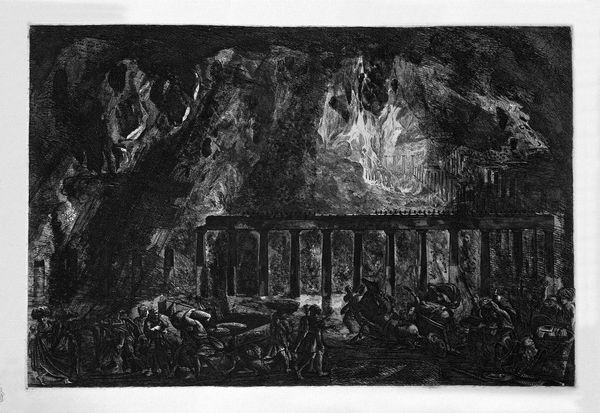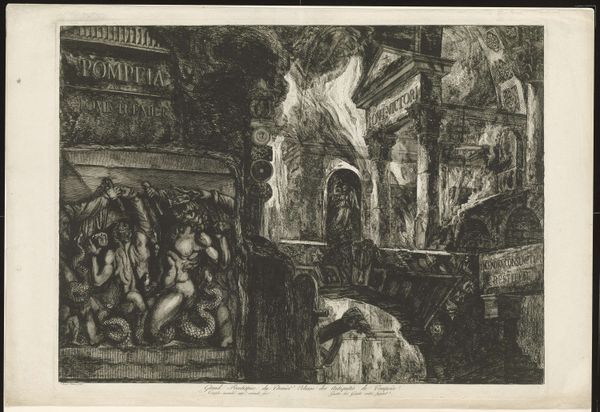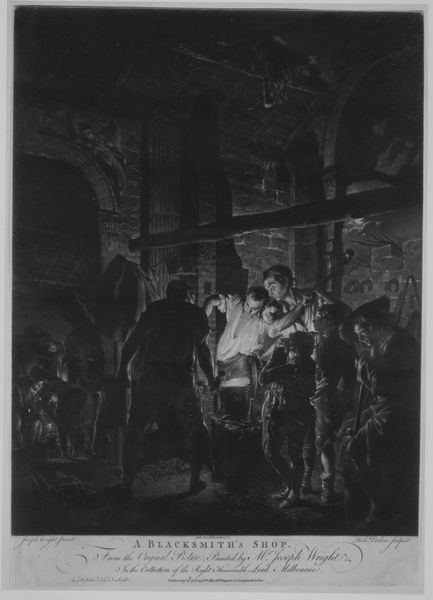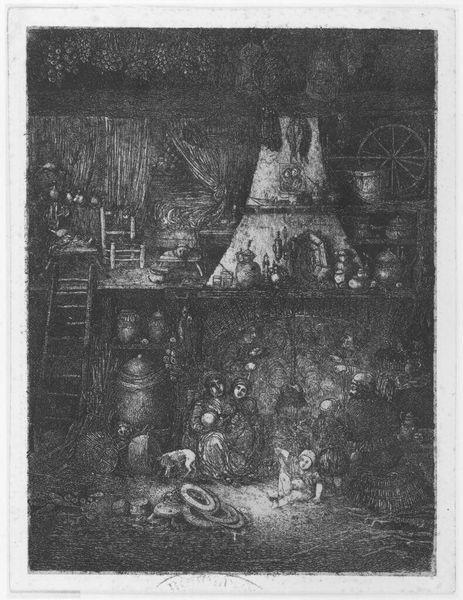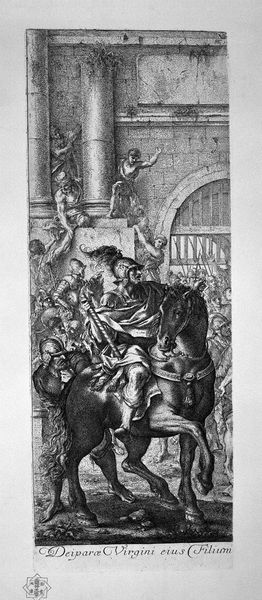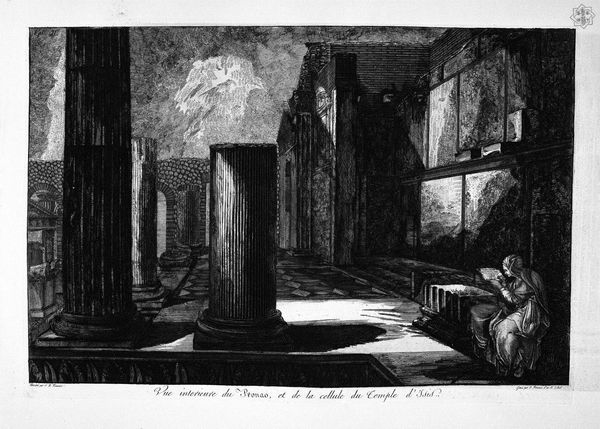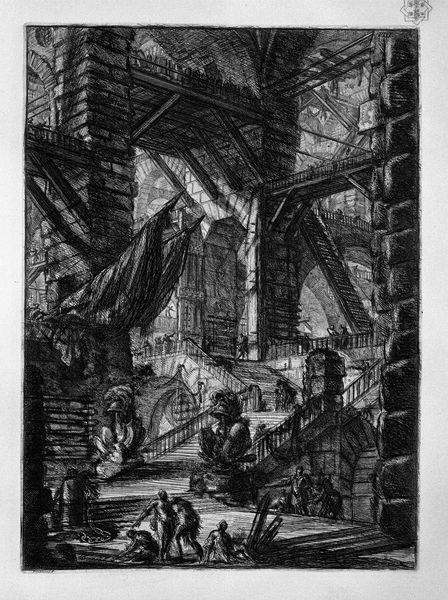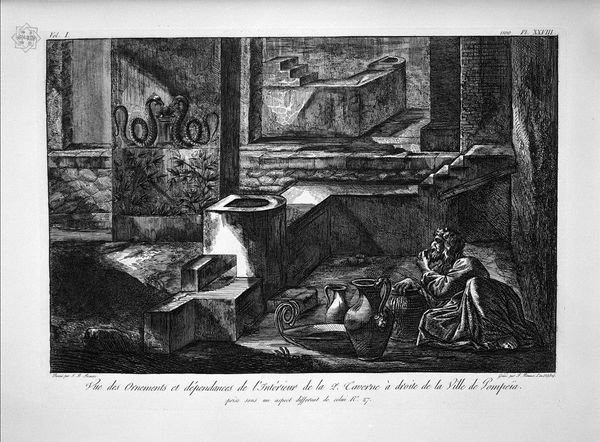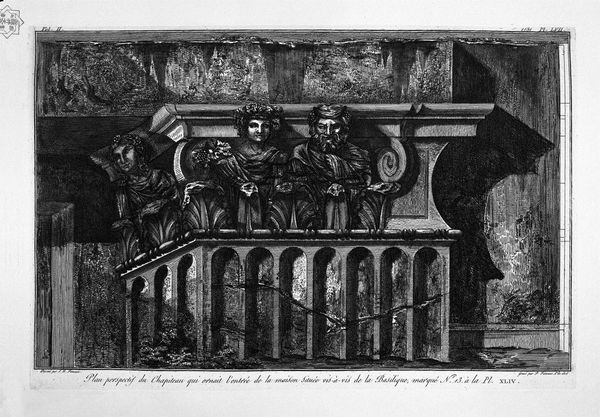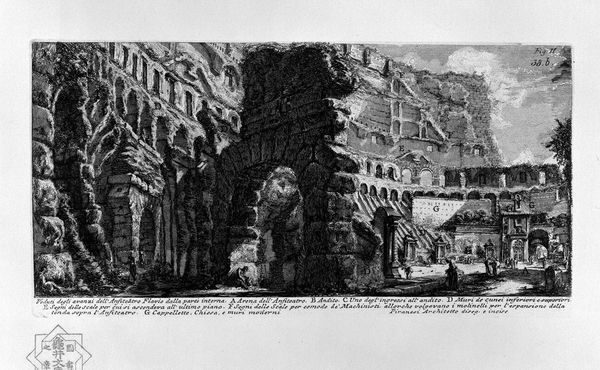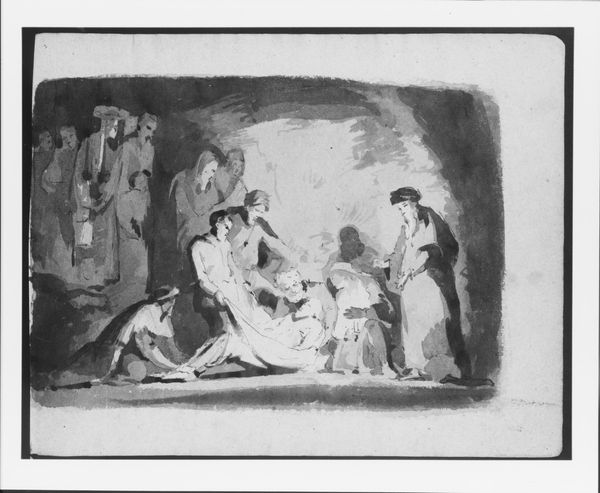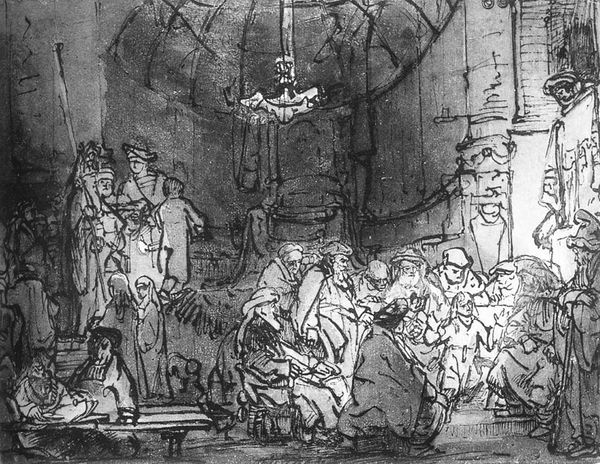
Cover Page. To the right a temple on fire, left a high-relief depicting the War of `Giants against Jupiter.
0:00
0:00
print, etching
#
allegory
#
baroque
# print
#
etching
#
greek-and-roman-art
#
charcoal drawing
#
cityscape
#
history-painting
Copyright: Public domain
Editor: So, here we have Giovanni Battista Piranesi's etching, "Cover Page. To the right a temple on fire, left a high-relief depicting the War of Giants against Jupiter." The scene is intensely dramatic, almost theatrical. I’m immediately struck by the juxtaposition of destruction and supposed grandeur. What's your take on this work? Curator: It's powerful, isn't it? Beyond the immediate visual impact, Piranesi is offering a commentary on power, ruin, and the legacies of empires. Notice how the burning temple, a symbol of established authority, is juxtaposed with the chaotic struggle of the Giants against Jupiter. What could this positioning suggest about the relationship between power and chaos? Editor: Maybe that power, even at its most impressive, is always vulnerable to being overthrown? That these structures of authority are ultimately fragile? Curator: Precisely. And if we consider Piranesi's historical context, living in a Rome that was grappling with its own diminished status, the image gains even greater resonance. He’s critiquing the very foundations upon which power is built. Consider too, the inscription labeling one side "Pompeia". How might the inclusion of Pompeii - a city buried and forgotten by an empire - be politically charged? Editor: That definitely makes you think about what gets remembered and who controls the narrative, doesn't it? Perhaps he is pointing out that even the most seemingly invincible empires eventually crumble into dust. Curator: Exactly. By placing these classical ruins in a contemporary light, Piranesi forces us to confront uncomfortable truths about our own society and its power structures. This piece really exemplifies how art can become a potent tool for social commentary. Editor: I didn’t realize it was so layered. Thanks for highlighting the cultural significance behind it! Curator: My pleasure! Looking closely at context is essential in really understanding artwork.
Comments
No comments
Be the first to comment and join the conversation on the ultimate creative platform.

